Trekking in the Himalayas: A Journey Through Nepal's Majestic Peaks
The Himalayas rise from the earth like colossal guardians, their snow-capped peaks piercing the sky in a display of nature's raw power and beauty. Nepal, nestled at the heart of this mountain range, serves as the gateway to some of the most breathtaking trekking experiences on the planet. Here, the air is crisp and thin, filled with the promise of adventure and the whispers of ancient tales.
With Tweet Tours, as you set foot on these hallowed trails, you're not just a traveler - you're a modern-day explorer, following in the footsteps of legendary mountaineers and age-old traders. Each step takes you further into a world where nature reigns supreme and human resilience is tested against the backdrop of some of the world's highest peaks.
From the moment your boots touch the ground in Kathmandu, you'll feel the pull of the mountains. The bustling streets of the capital, with their sensory overload of sights, sounds, and smells, soon give way to serene mountain paths where the only soundtrack is the crunch of gravel underfoot and the distant tinkling of yak bells.
Nepal
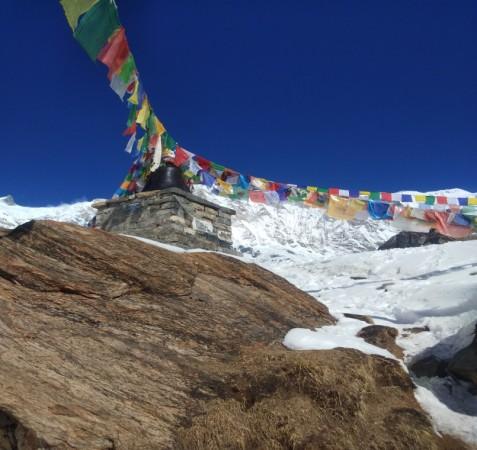
The Crown Jewels: Top Trekking Routes in the Himalayas
Everest Base Camp Trek: Walking in the Footsteps of Legends
The Everest Base Camp Trek is more than just a hike; it's a pilgrimage to the foot of the world's highest mountain. This journey takes you through the heart of Sherpa country, where Buddhism and mountaineering intertwine in a unique cultural tapestry.
As you ascend from Lukla, the gateway to the Everest region, you'll pass through verdant forests of rhododendron and pine before emerging into the stark, beautiful world above the tree line. The trail winds through charming villages like Namche Bazaar, the bustling hub of the Khumbu region. Here, you can stock up on last-minute supplies, enjoy a cup of rich Himalayan coffee, or simply soak in the views of Kongde Ri peak looming in the distance.
One of the trek's highlights is the ascent of Kala Patthar, a ridge offering unparalleled views of Everest. Standing at 5,545 meters, with prayer flags whipping in the wind around you, you'll feel on top of the world as the first light of dawn paints Everest's peak in hues of gold and pink. It's a moment that burns itself into your memory, a perfect fusion of natural beauty and personal achievement.

Everest Base Camp Trek - © Gather
Annapurna Circuit: A Trek for All Seasons
The Annapurna Circuit is a trek of contrasts, a journey that takes you from subtropical jungles to arid high-altitude deserts. This diversity is what makes it a favorite among seasoned trekkers and first-timers alike.
Your journey begins in the lush lowlands, where terraced rice fields cling to hillsides and waterfalls cascade down verdant slopes. As you ascend, the landscape transforms dramatically. The fertile valleys give way to rugged gorges, and the air becomes noticeably thinner.
One of the circuit's most challenging and rewarding sections is crossing the Thorong La Pass. At 5,416 meters, it's a test of endurance and willpower. But the views from the top - a 360-degree panorama of snow-capped peaks stretching to the horizon - make every labored step worth it.
The cultural aspect of the Annapurna Circuit is equally captivating. You'll pass through villages where time seems to stand still, like Marpha, famous for its apple orchards and traditional Thakali architecture. Here, you can sample local apple brandy or warm up with a slice of apple pie - a surprisingly delicious fusion of local produce and trekker-influenced cuisine.
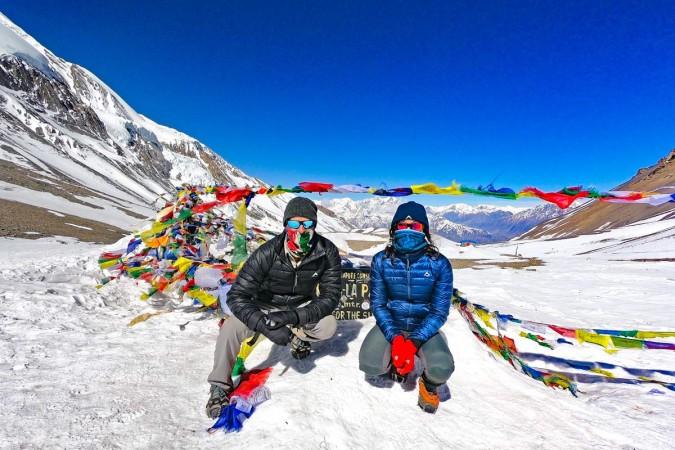
Annapurna Circuit Trek - © Gather
Langtang Valley: The Road Less Traveled
The Langtang Valley trek offers a more intimate Himalayan experience. Despite its proximity to Kathmandu, it remains less crowded than its more famous counterparts, allowing for a more serene communion with nature.
The trek begins in the village of Syabrubesi, where the air is thick with the scent of pine and the sound of the Langtang Khola river. As you ascend, the trail takes you through dense forests of oak and rhododendron, alive with the chatter of langur monkeys and the melodious songs of native birds.
A highlight of this trek is reaching Kyanjin Gompa, a small settlement nestled beneath the imposing peaks of Langtang Lirung and Kimshung. Here, you can explore the local cheese factory, a testament to the Swiss influence in Nepal's dairy industry, or climb Kyanjin Ri for panoramic views of the surrounding glaciers and peaks.
The Langtang Valley is also steeped in Tibetan Buddhist culture. You'll encounter numerous chortens, mani walls inscribed with prayers, and colorful prayer flags fluttering in the mountain breeze. These spiritual elements, set against the backdrop of towering peaks and pristine wilderness, create a profound sense of peace and connection to the natural world.
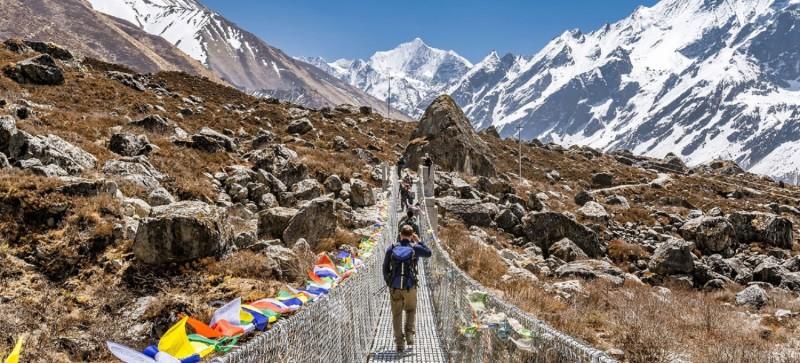
Langtang Valley Trek - © Gather
Kanchenjunga Base Camp Trek: Where Eagles Dare
The Kanchenjunga Base Camp Trek is a journey into the wild heart of eastern Nepal. This remote trail leads you to the foot of the world's third-highest peak, through landscapes that remain largely untouched by the modern world.
As you trek through dense forests of bamboo and rhododendron, you'll feel like you've stepped into a living nature documentary. The region is a biodiversity hotspot, home to elusive creatures like the red panda and snow leopard. While sightings are rare, the thrill of knowing these magnificent animals share your path adds an extra layer of excitement to each day's journey.
One of the trek's most awe-inspiring moments comes as you reach Pangpema, the north base camp of Kanchenjunga. Here, the mountain reveals itself in all its glory, a colossal wall of rock and ice that seems to touch the sky. The play of light on the glacier as the sun sets is a spectacle that defies description, painting the landscape in surreal hues of pink and gold.
The trek also offers unique cultural insights. The trails pass through villages of the indigenous Limbu and Rai people, whose traditions have remained largely unchanged for centuries. You might be invited to join a traditional feast or witness a shamanic ritual, experiences that offer a glimpse into a way of life that's fast disappearing in other parts of Nepal.
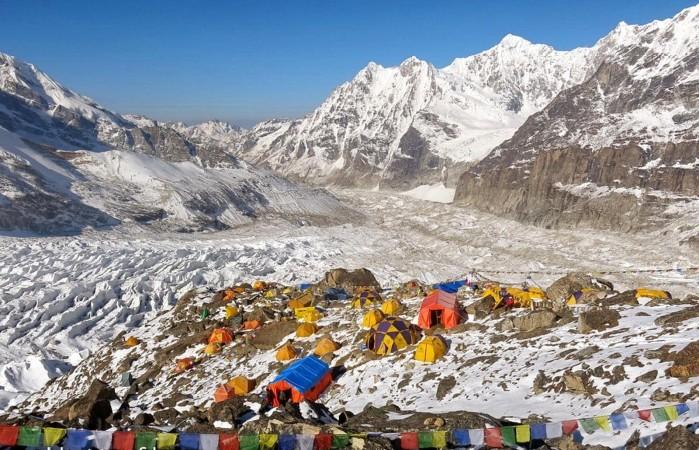
Kanchenjunga Base Camp Trek - © Gather
Makalu Base Camp Trek: The Path Less Paddled
The Makalu Base Camp Trek is a challenging journey that rewards the intrepid with some of the most pristine wilderness in the Himalayas. This trail takes you through the Makalu-Barun National Park, a protected area that's home to over 3,000 species of flowering plants and a rich array of wildlife.
The trek begins in the lush lowlands, where you'll pass through terraced fields and dense forests. As you ascend, the landscape transforms dramatically. The verdant hillsides give way to rocky moraines and glacial valleys, creating a stark, lunar-like beauty that's unique to high-altitude environments.
A highlight of this trek is the Barun Valley, often described as one of the last pristine ecosystems in the world. Here, crystal-clear rivers tumble down from glaciers, creating a series of waterfalls that are among the highest in Nepal. The valley floor is carpeted with wildflowers in spring, creating a colorful contrast to the towering, snow-capped peaks above.
Reaching Makalu Base Camp is an achievement in itself. At 5,000 meters, it offers unparalleled views of Makalu, the world's fifth-highest peak. The mountain's distinctive pyramid shape dominates the skyline, a testament to the raw power of geological forces that shaped this incredible landscape.
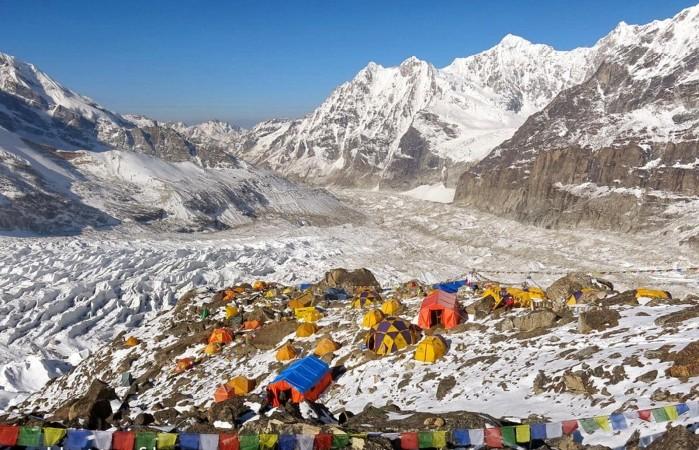
Makalu Base Camp Trek - © Gather
Upper Dolpo Trek: Tibet's Doppelgänger
The Upper Dolpo trek is a journey into one of Nepal's most remote and culturally unique regions. This high-altitude desert, tucked behind the Dhaulagiri massif, feels more like Tibet than Nepal, offering trekkers a rare glimpse into a way of life that has remained largely unchanged for centuries.
One of the trek's most memorable experiences is crossing the Kang La pass at 5,350 meters. From this vantage point, you're rewarded with panoramic views of the Dhaulagiri and Annapurna ranges, a sea of peaks stretching to the horizon. The descent from the pass brings you to the shores of Phoksundo Lake, a body of water so vibrantly turquoise it seems almost unreal against the stark, arid landscape.
Upper Dolpo is also home to some of Nepal's most isolated communities. The people here practice a form of Tibetan Buddhism that predates the more widely known schools. You'll have the opportunity to visit ancient monasteries like Shey Gompa, where centuries-old traditions continue uninterrupted. The monastery's interior, adorned with intricate murals and statues, offers a window into the rich spiritual life of this remote region.
Perhaps the most unique aspect of trekking in Upper Dolpo is the chance to witness the Yartung festival if you time your visit right. This ancient horse racing and archery festival is a riot of color and excitement, bringing together communities from across the region in a celebration of local culture and traditions.
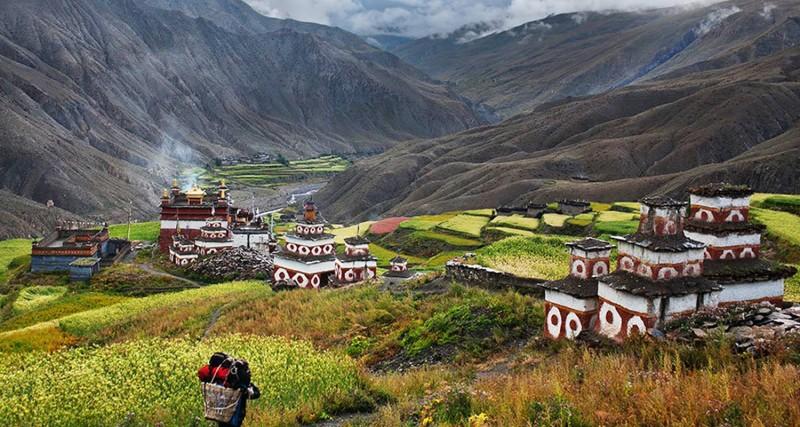
Upper Dolpo Trek - © Gather
Himalayas Trekking Safety Tips & Advice
Trekking in the Himalayas is an adventure of a lifetime, but it requires careful preparation and respect for the environment. Here are some essential tips to ensure your journey is safe and enjoyable:
Acclimatization: The Key to High-Altitude Success
The importance of proper acclimatization cannot be overstated. As you ascend to higher altitudes, the air becomes thinner, and your body needs time to adjust. A good rule of thumb is to ascend no more than 300-500 meters per day once you're above 3,000 meters.
Take rest days in places like Namche Bazaar on the Everest Base Camp trek or Manang on the Annapurna Circuit. These stops not only allow your body to acclimatize but also offer opportunities to explore local culture and acclimatize your mind to the pace of mountain life.
Remember, altitude sickness doesn't discriminate. Even the fittest trekkers can fall victim if they ascend too quickly. Listen to your body, stay hydrated, and don't hesitate to descend if you experience severe symptoms.
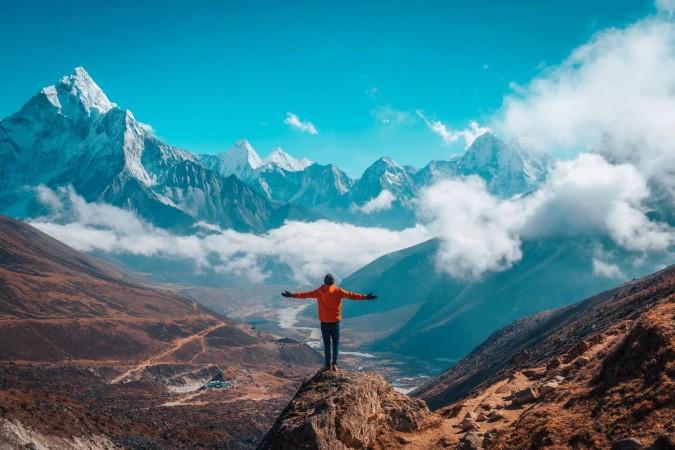
Himalayas Trekking Experience - © Gather
Gear Up: Your Life Support System in the Mountains
Your gear is your lifeline in the Himalayas. Invest in quality equipment, particularly when it comes to your boots, sleeping bag, and outer layers. The mountains can be unforgiving, and having reliable gear can make the difference between a challenging but enjoyable trek and a miserable experience.
Layer your clothing to adapt to the rapidly changing mountain weather. A good system includes a moisture-wicking base layer, an insulating middle layer, and a waterproof outer layer. Don't forget essentials like a warm hat, gloves, and sunglasses with UV protection.
Guide or No Guide: Navigating the Pros and Cons
While it's possible to trek some routes independently, hiring a guide and porter can greatly enhance your experience. A knowledgeable guide can provide insights into local culture, help with communication, and ensure you're trekking safely and responsibly.
Porters, on the other hand, can carry the bulk of your gear, allowing you to enjoy the trek without the burden of a heavy pack. Plus, by hiring local guides and porters, you're directly contributing to the local economy and supporting mountain communities.
If you do choose to trek independently, make sure you're well-prepared. Carry detailed maps, a reliable compass or GPS device, and familiarize yourself with the symptoms of altitude sickness and other potential health issues.
Respect Local Customs: Tread Lightly, Both Physically and Culturally
The Himalayas are not just a playground for trekkers; they're home to diverse communities with rich cultural traditions. Show respect for local customs by dressing modestly, asking permission before taking photographs of people, and learning a few basic phrases in Nepali or the local dialect.
When passing mani walls or chortens, always walk to the left (clockwise) as a sign of respect. Remove your shoes before entering monasteries or homes, and don't touch religious artifacts without permission.
Leave No Trace: Preserving the Mountain Environment
The increasing popularity of Himalayan treks has put pressure on fragile mountain ecosystems. Practice Leave No Trace principles by packing out all your trash, using biodegradable soap, and staying on established trails to prevent erosion.
Consider bringing a water filtration system or purification tablets to reduce your reliance on bottled water, which contributes to plastic waste in the mountains. Small actions like these can help preserve the natural beauty of the Himalayas for future generations of trekkers and local communities alike.
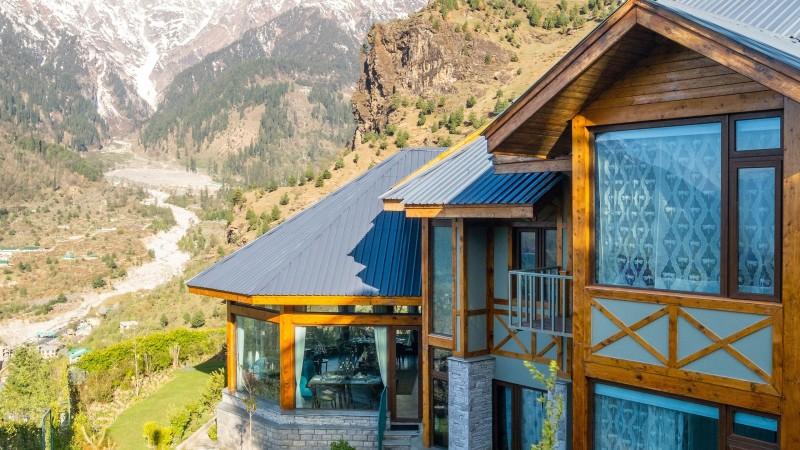
Accommodation Along Trekking Routes - © CN Traveller
Conclusion: The Call of the Mountains
Trekking in Nepal's Himalayas is more than just a physical journey; it's a transformative experience that challenges you physically, enriches you culturally, and inspires you spiritually. From the moment you take your first steps on the trail to the triumphant feeling of reaching your goal, every day brings new wonders and insights.
Whether you're standing in awe before the towering face of Everest, crossing high mountain passes on the Annapurna Circuit, or exploring the remote cultures of Upper Dolpo, the memories you create will stay with you long after you've descended from the mountains.
The Himalayas have a way of putting life into perspective, reminding us of our place in the grand scheme of nature. They challenge us, humble us, and ultimately, if we're open to the experience, they change us.
So, as you plan your Himalayan adventure with Tweet Tours, remember that the journey is as important as the destination. Embrace the challenges, savor the moments of beauty, and allow yourself to be transformed by the majesty of the world's greatest mountain range. The mountains are calling – and the adventure of a lifetime awaits.
Articles for you

Experience Aboard The RV Indochine II - A Mekong Cruise With Tweet World Travel
The RV Indochine II is a luxury river cruise ship, offering an unforgettable journey through many attractions along the Mekong River. Built in 2017, this upscale vessel combines colonial elegance with modern conveniences to create a comfortable yet stylish environment for its crew and passengers. The ship’s intimate size makes it ideal for those seeking a more personal cruising experience while exploring Vietnam and Cambodia rich culture, scenery, and heritage. Whether you're gazing at the landscape from your private balcony or enjoying authentic local cuisine, RV Indochine II promises an exotic adventure like no other.

Witness Stilt Fishing In Sri Lanka: An Eco-Tourism Experience
Sri Lanka, renowned for its stunning beaches and rich cultural heritage, harbors a unique tradition that has captivated travelers for centuries: stilt fishing. This ancient practice, passed down through generations of coastal communities, blends artistry with necessity, offering a glimpse into a way of life intimately connected to the island's coastal rhythms. Stilt fishing in Sri Lanka isn't merely a means to catch fish; it's a cultural emblem, embodying the resilience and ingenuity of Sri Lanka's fishing communities.

Make Your Trip Stress-Free With The Tweet Trip App
Embark on your next adventure with confidence by downloading the Tweet Trip App, available for both iOS and Android. This essential travel companion allows you to view your detailed itinerary, stay connected with your tour guide and fellow travelers, receive real-time updates, and provide feedback effortlessly. With features like in-app messaging, emergency assistance, and location sharing, the Tweet Trip App ensures you travel smarter, stay connected, and enjoy a seamless, worry-free journey. Get started today and make the most of your travel experience with Tweet World Travel.

Pedal Through Paradise: Unveiling Cambodia's Hidden Gems on Two Wheels
The gentle whir of bicycle wheels mingles with the distant chants of monks as you glide past emerald rice paddies stretching to the horizon. This is Cambodia - a sensory explosion waiting to be experienced on two wheels. At Tweet Tours, we believe there's no better way to immerse yourself in the Kingdom of Wonder than by bicycle.
Cambodia isn't just a destination; it's a living, breathing tapestry of ancient wonders, natural beauty, and vibrant culture. Our carefully crafted cycling tours take you beyond the typical tourist haunts, offering a unique perspective on this captivating country. Ready to clip in and discover the magic of Cambodia? Let's ride!

Trekking in the Himalayas: A Journey Through Nepal's Majestic Peaks
The Himalayas rise from the earth like colossal guardians, their snow-capped peaks piercing the sky in a display of nature's raw power and beauty. Nepal, nestled at the heart of this mountain range, serves as the gateway to some of the most breathtaking trekking experiences on the planet. Here, the air is crisp and thin, filled with the promise of adventure and the whispers of ancient tales.
With Tweet Tours, as you set foot on these hallowed trails, you're not just a traveler - you're a modern-day explorer, following in the footsteps of legendary mountaineers and age-old traders. Each step takes you further into a world where nature reigns supreme and human resilience is tested against the backdrop of some of the world's highest peaks.
From the moment your boots touch the ground in Kathmandu, you'll feel the pull of the mountains. The bustling streets of the capital, with their sensory overload of sights, sounds, and smells, soon give way to serene mountain paths where the only soundtrack is the crunch of gravel underfoot and the distant tinkling of yak bells.

Exploring Mui Ne's Wonders: Unique Attractions & Local Dishes
Nestled along the southeastern coast of Vietnam, Mui Ne emerges as a captivating gem, blending natural wonders with cultural richness. Renowned for its stunning landscapes and unique attractions, Mui Ne beckons travelers seeking both relaxation and adventure in equal measure. Mui Ne's renowned beach dunes, bustling fishing towns, and excellent local food await exploration at every turn.
The allure of Mui Ne lies not only in its pristine beaches and crystal-clear waters but also in its diverse range of activities catering to every traveler's whims. Whether you're drawn to thrilling water sports like kitesurfing and windsurfing on its dynamic shores or seeking tranquility amidst the picturesque Fairy Stream, Mui Ne promises an unforgettable journey filled with discovery.
